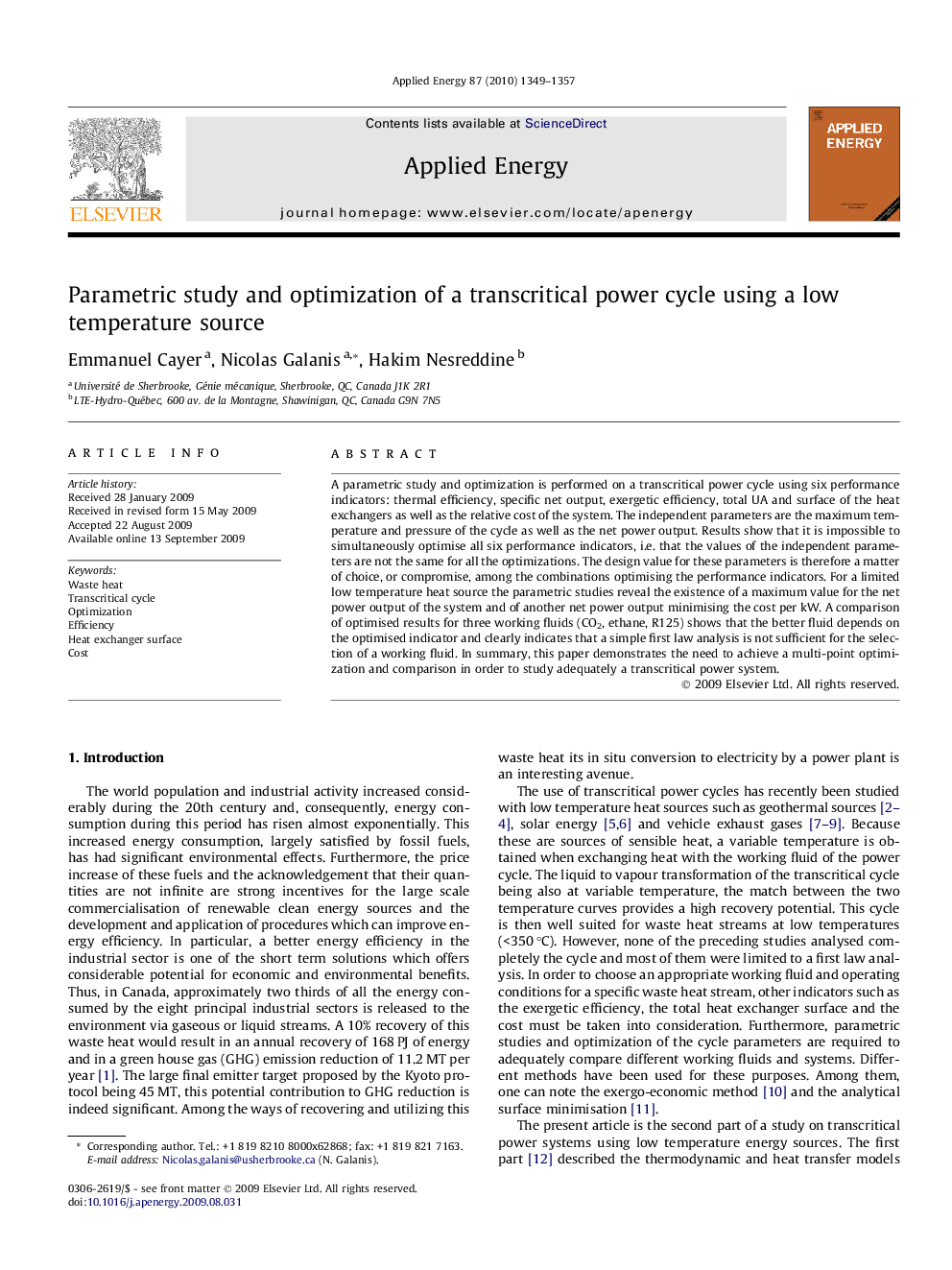| Article ID | Journal | Published Year | Pages | File Type |
|---|---|---|---|---|
| 244644 | Applied Energy | 2010 | 9 Pages |
A parametric study and optimization is performed on a transcritical power cycle using six performance indicators: thermal efficiency, specific net output, exergetic efficiency, total UA and surface of the heat exchangers as well as the relative cost of the system. The independent parameters are the maximum temperature and pressure of the cycle as well as the net power output. Results show that it is impossible to simultaneously optimise all six performance indicators, i.e. that the values of the independent parameters are not the same for all the optimizations. The design value for these parameters is therefore a matter of choice, or compromise, among the combinations optimising the performance indicators. For a limited low temperature heat source the parametric studies reveal the existence of a maximum value for the net power output of the system and of another net power output minimising the cost per kW. A comparison of optimised results for three working fluids (CO2, ethane, R125) shows that the better fluid depends on the optimised indicator and clearly indicates that a simple first law analysis is not sufficient for the selection of a working fluid. In summary, this paper demonstrates the need to achieve a multi-point optimization and comparison in order to study adequately a transcritical power system.
